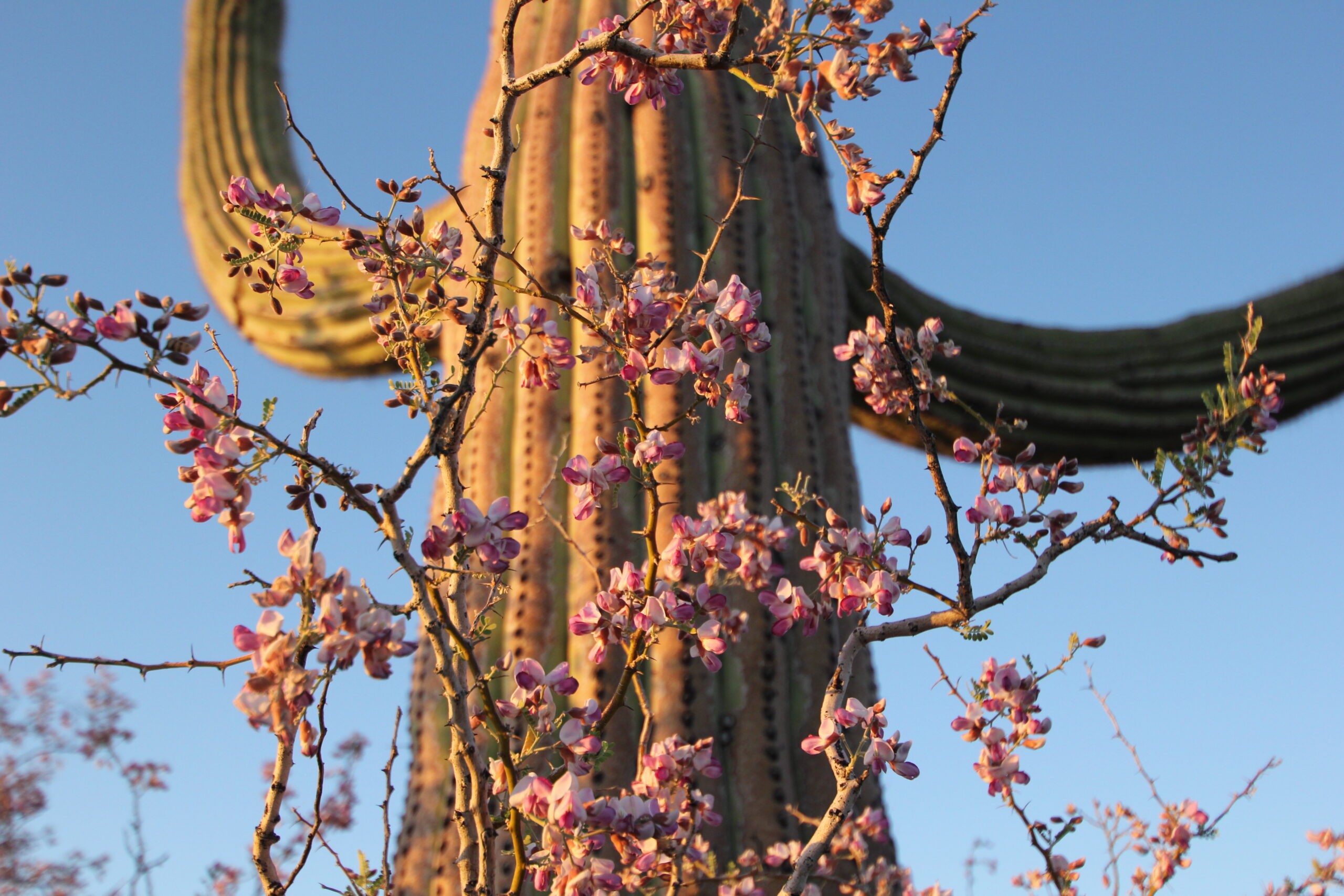Plant Life
IFNM, especially Ragged Top Mountain and surrounding lands, has long been recognized as an area of exceptional biological diversity. This recognition helped secure national monument status in July 2000.
Of the 594 taxa of plants on IFNM, 91 are “sunflowers” (family Asteraceae), 82 are grasses (Poaceae), 43 are cacti (Cactaceae), 36 (trees) are bean/pea relatives (Fabaceae), and 61 species of plants (about 10%) are exotic (i.e. introduced non-native species). Only six of the exotics seem widespread and aggressive with Buffelgrass being the most problematic.
The most ecologically important or keystone species include the ubiquitous desert ironwood tree, an abundant tree (to 30’ high) on the slopes and ravines of the mountains and is known to serve over 640 associated species of plants and animals for shade, food, perches and shelter. Like many other legumes, its roots host nitrogen fixing bacteria that enrich the soils. Paloverde (2 species), and velvet mesquite trees are also found on slopes.
Cacti include cholla (9 taxa plus 10 hybrids), prickly pear (7 plus 3 hybrids), hedgehog (3), pincushion (3), and barrel cactus (3). Cacti provide food, nesting sites, nurse plants and cover for animals. The endangered Nichol’s Turk’s head cactus (Echinocactus horizonthalonius var. nicholii) is found in the monument. You can read more about its conservation here.

Mesquite trees, foothill (yellow) paloverde and saguaro (cacti) serve important roles in the flatland deserts of the valleys often dominated by grasses and creosote. Blue palo verde is common along the lower washes.
Abundant shrubs include ocotillo, white thorn and catclaw acacia, triangle bursage, jojoba, white ratany, canyon ragweed, wolfberry, and gray-thorn. Bushes and trees provide cover, food, and shade for desert creatures and serve as nurse plants for saguaros.
Numerous and colorful annual flowers appear in early spring after good winter rains and in early fall. Flowers include gold poppy, blue lupine, and owl clover among others.
